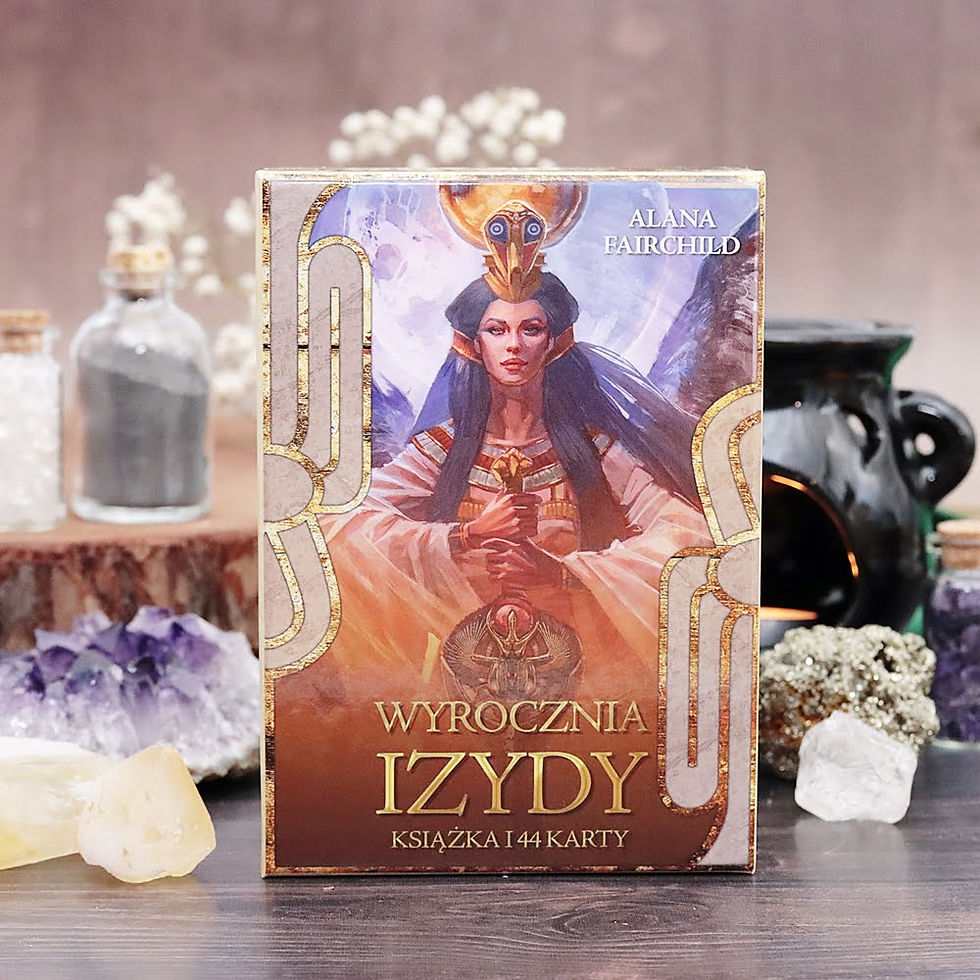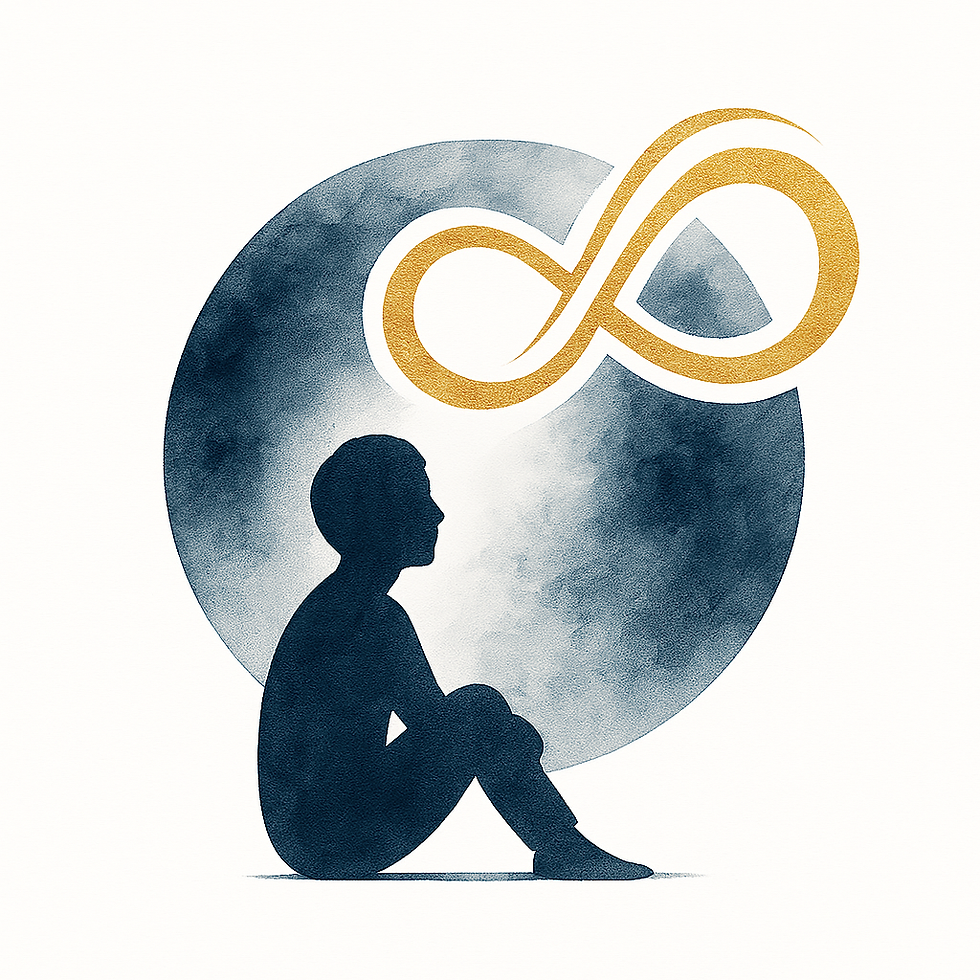What’s the deal with light cards?
- Marta

- Jul 12
- 5 min read
I bought my first deck of light cards on the fly—just a few days before my birthday, in between meetings. The box caught my eye with its colors and the promise of a “conversation with your intuition.” I had no idea how to read them or why on earth I needed yet another self-development “gadget.” And yet that very evening, I sat down with a mug of hot cocoa, shuffled the cards…and something inside me stirred. A few days later, friends gave me a second deck—a “heart” gift—because they saw how my eyes lit up when I told them about my morning draw.
Since then, these cards have become my quiet ritual: five minutes of silence, one card, a few lines in my journal. And I know I’m not alone. More and more people ask, “What’s up with these intuition cards? Are they fortune-telling? Do you need a special gift?” This article is for you—if you’re curious why light cards are so popular today and how they can genuinely support your daily life.

A card is like a mirror, not a crystal ball
Traditional tarot follows a strict structure: 78 arcana, fixed meanings, ranked court cards. Light cards are much freer. Each deck tells its own story—some feature goddesses, others star-travel motifs, animal totems, or colorful mandalas. What unites them is this: they’re not interested in “what will happen,” but in “what’s pulsing within you right now.”
When you draw a card, you see an image, a word, sometimes a brief affirmation. Your brain’s right hemisphere and your body react first: a shiver, a sigh, a smile. Only then does logic kick in. It’s a moment to capture your theme for the day before the to-do list swallows you.
Three biggest misconceptions
“You have to be clairvoyant.” Not at all. Intuition is a muscle—you train it every day, even simply by choosing your outfit without overthinking. Cards just speed up the dialogue with your body.
“The cards will decide for me.” The choice is always yours. A card might suggest that the energy of “Joy” needs more space, but you decide whether to sign up for a dance class or just press play on your favorite playlist.
“It’s the same as tarot.” Tarot is like a symphony score—you know when the strings come in and when the brass takes over. Light cards are more like jazz: you know the key, but you improvise according to your mood.
What does my session look like?
I start by silencing my phone and clearing my space. I light a candle and place my hands on my heart. Three inhales, three exhales. I approach with a question or intention, or simply ask how the cards can support me today. I shuffle, then wait for one to drop as I riffle—whatever falls is the one I work with. Today’s card: turquoise wings; keyword: “Lightness.” Before I consult the booklet, I notice my breath widening. In my notebook I write:
Wings = space.Lightness = ease.
Every deck comes with its own guidebook and more elaborate spreads for deeper topics. It’s worth reading before you begin.
That’s how you work with a card: no predictions, just pure suggestion coded into an image.
Why do you need to clear your deck?
The first cleansing ritual is crucial, and every guidebook has detailed instructions—don’t skip them. Beyond that, cards absorb your thoughts, emotions, and even the energy of whoever else handles them—like dust on your phone screen. Once a month I give mine a little spa treatment:
Moon bath: During the full moon I spread them on my windowsill. The soft glow washes away stories I no longer need.
Incense: When tackling a tough topic, I fan the deck through sacred smoke. I feel the cards “breathe” fresh energy.
Selenite or fluorite: I rest the deck on a crystal that absorbs what’s unnecessary. The cards “sleep” on its cool surface and awaken more clear.
Result? The next time I shuffle, the images sparkle again—literally and figuratively.
My favorite “Pulse of the Day” spread
I’m not a fan of autopilot mornings—I’m a Human Design generator with the Spleen authority, so I schedule recharge time in my calendar before meetings and work.
Over time, I developed three questions:
Wave – What dominates my energy field today?
Spark – What will give me strength once the wave subsides?
Step – What can I do in ten minutes to turn that spark into fire?
Writing down these answers makes my day feel like a roadmap, not a random string of notifications.
How to choose your first deck
I remember spotting an emerald-hued box in an online bookstore. The image of a woman holding an Egyptian ankh made my heart race. My head churned out a hundred pros and cons, but my body—typical for someone with Splenic authority—already knew. That was my deck.
Choosing is simple:
Look at the illustrations online or in the store.
Notice where you feel a thrill of joy or excitement.
Let practice handle the rest.
Even if the symbolism seems obscure at first, one sentence from the booklet will spark insight. And if the booklet is silent, even better—you rely on pure association.
What have the cards changed in my daily life?
First, my pace. Instead of bouncing from task to task, I pause for even two minutes to check in with myself. Paradoxically, this clarity helps me achieve more because I act from focus, not distraction.Second, my gentleness. When a card shows “Patience,” I no longer hear a harsh “Slow down!” but a soft invitation to “Breathe.”Third, my connection with friends. Our group chat has become a mini card club. We constantly share photos of our draws and how they influenced our decisions. I feel supported.
If you already have a deck…
…try this simple experiment today. Take a breath, ask for guidance for the next 24 hours, and draw a card. Don’t hunt for complicated meanings—just note the first thought that comes to you. In the evening, see where the card “smiled” at you during the day. You’ll be amazed at how accurately your intuition nudges you toward small steps—and small steps bring big revolutions in business, relationships, and well-being.
Light cards aren’t a magic crystal ball but a gentle mirror. They help you pause, hear your inner voice, and turn it into conscious action. I used to think they were just “pretty pictures.” Today I see that in those pictures lives a map—not of the future, but of a mindful present.
If you feel the call, take a step: close your computer, shuffle your deck, draw one card. Let the first word that comes guide you. You might discover, as I did, that all you were missing in your daily rush was five minutes of conversation with yourself.
May your cards shine as brightly as you—today and every morning to come.
If you’d like to learn more about yourself, order your first Human Design report HERE.
_edited.png)


